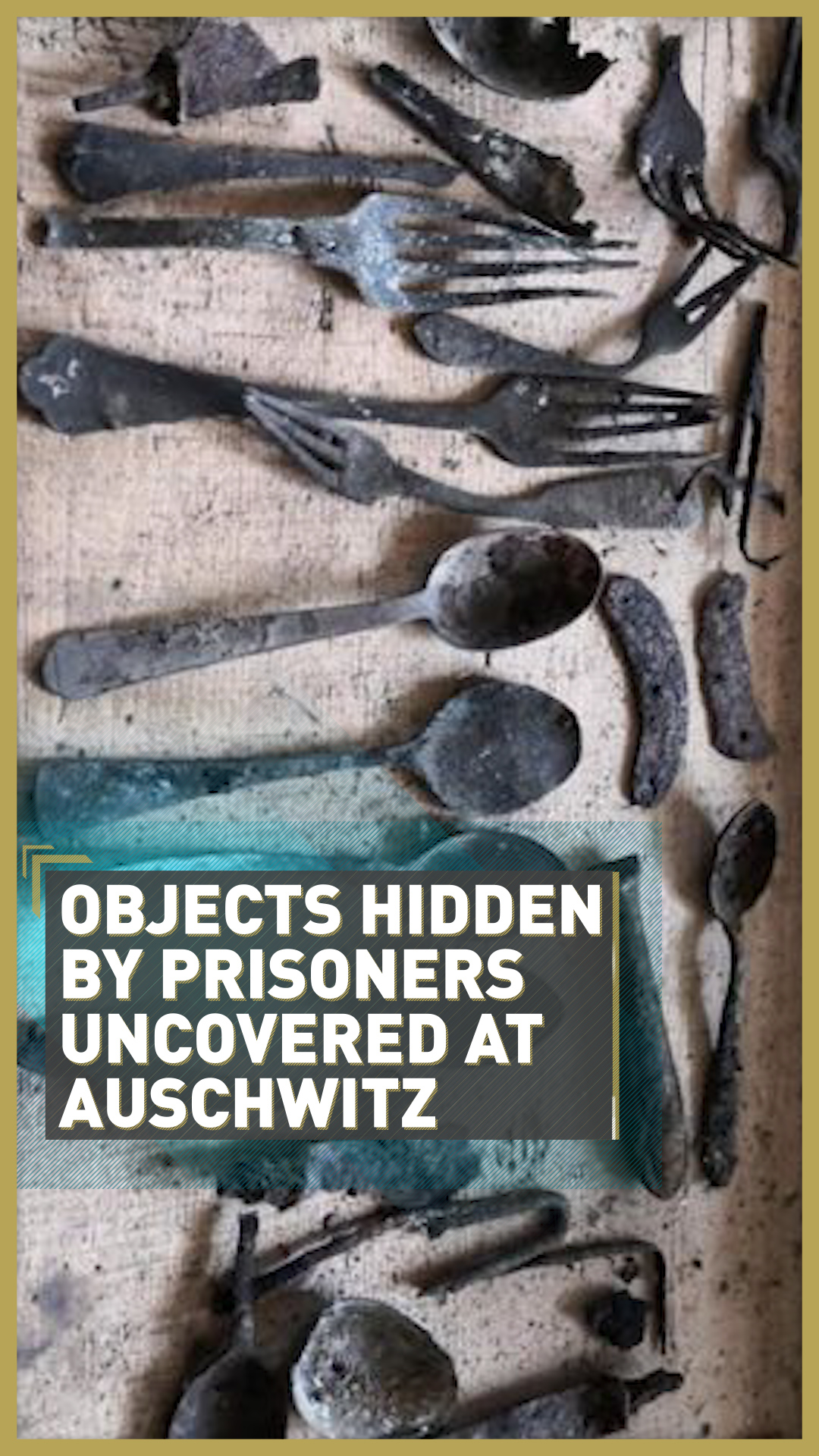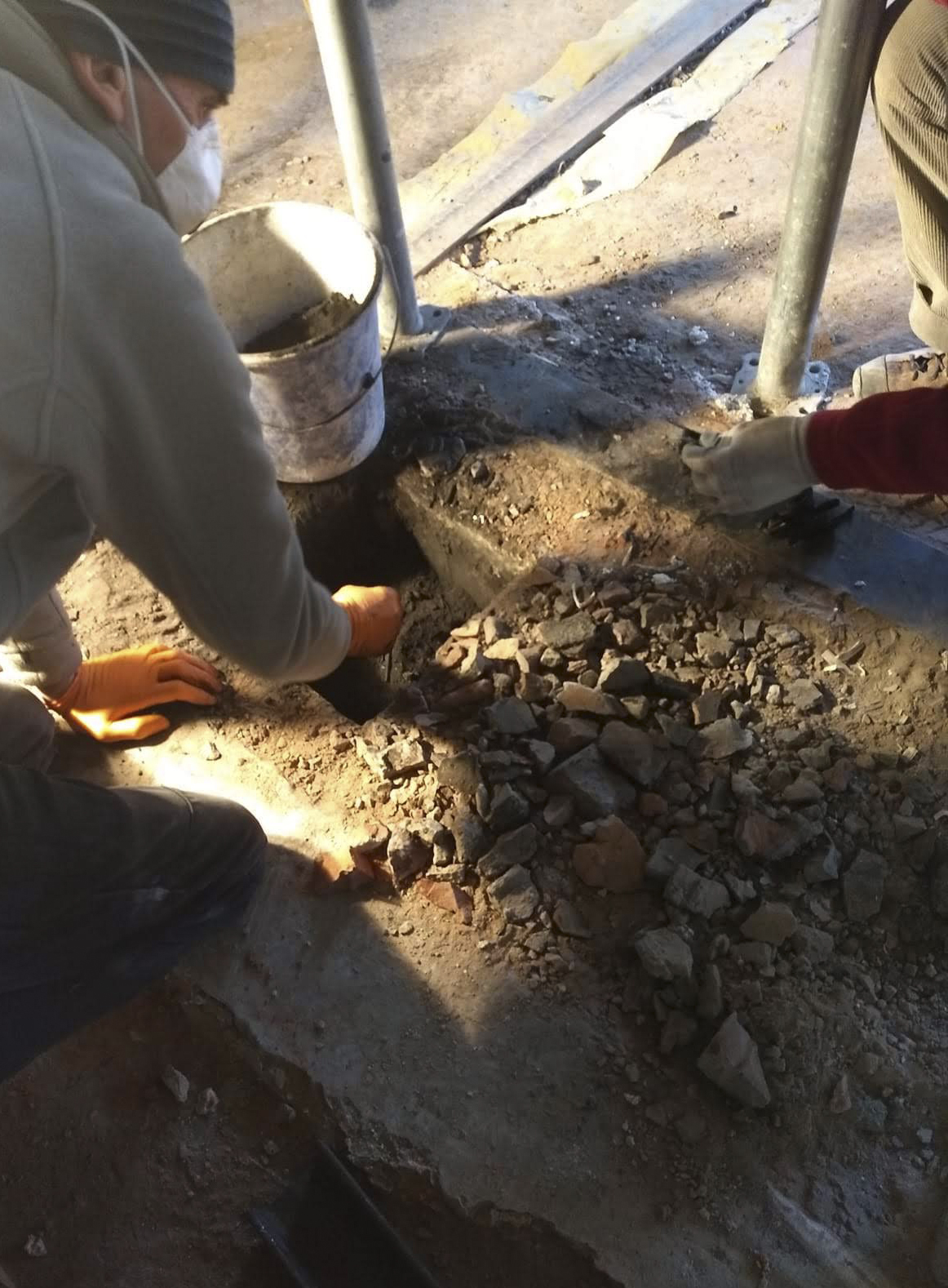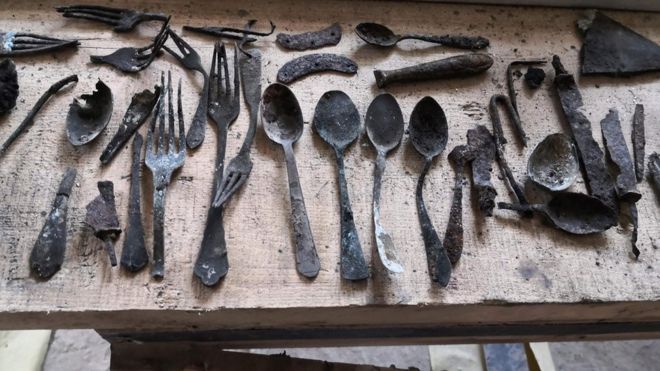01:04

Renovation works at Auschwitz-Birkenau, the former Nazi concentration camp in Oświęcim, Poland, have uncovered spoons, forks, cobblers' tools and other objects. The utensils were hidden beneath a chimney flue in Block 17 of the camp.

The objects were found in block 17 of the concentration camp as measures were being taken to preserve the original masonry. /STR / NATIONALFONDS/KACZMARCZYK/MARSZALEK / AFP
The objects were found in block 17 of the concentration camp as measures were being taken to preserve the original masonry. /STR / NATIONALFONDS/KACZMARCZYK/MARSZALEK / AFP
The objects include knives, hooks, scissors, pieces of leather and parts of shoes, according to Austria's National Fund for Victims of National Socialism.
In preparation for the renovation and restoration of the block, the fund commissioned the works that led to the discovery of the hidden artifacts.
"These utensils, kept out of sight of the SS guards, were perhaps used by shoe makers, or to prepare an escape or simply to be able to eat," the fund's secretary general, Hannah Lessing, told AFP.
It is believed the items were hidden in the chimney because Block 17 was the area for manual workers.
"It is no coincidence that a chimney was used as a hiding place in the very building where chimney sweeps were accommodated," said the fund's structural consultant, Joannes Hofmeister.

The objects uncovered range from knives, forks, scissors, pieces of leather, cobblers' tools and parts of shoes. /STR / NATIONALFONDS/KACZMARCZYK/MARSZALEK / AFP
The objects uncovered range from knives, forks, scissors, pieces of leather, cobblers' tools and parts of shoes. /STR / NATIONALFONDS/KACZMARCZYK/MARSZALEK / AFP
An exhibition is expected to be opened in 2021, but the objects will not be on display for now. Instead, they will be safeguarded in the Auschwitz-Birkenau museum for conservation.
One million Jews died at Europe's largest concentration camp, set up in 1940 after Nazi Germany occupied Poland.
More than 100,000 other people, some of whom include non-Jewish Poles, Roma and Soviet prisoners also died at the camp.
The camp was liberated just over 75 years ago on 27 January 1945 and more than 2.3 million people visited the site in 2019.
Video editor: Pedro Duarte
Source(s): AFP